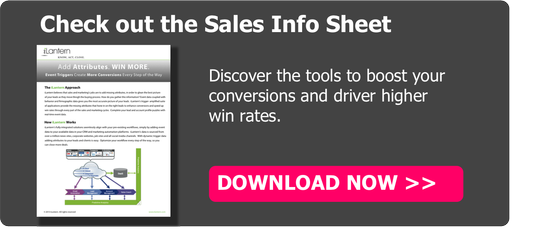Customer Retention: Use Your CRM and Sales Automation Tools
Customer Retention: Use Your CRM and Sales Automation Tools:
by

Name a key customer, maybe your biggest sale from three years ago. Now, name your most important prospect.
Do you know as much about your customer as you do that prospect? Maybe you’re scouring the online news about the prospect, but when’s the last time you checked the news about that customer? For that matter, is the customer even on your email marketing list?
You probably don’t check customer news, but don’t feel guilty. Until now there haven’t been the tools to aggregate the news, which comes from thousands of sources. And maybe the customer isn’t on your email marketing list, but should be.
The conventional wisdom is that it costs more to gain a customer than to keep one – five to 10 times more, according to the now-classic book “The Loyalty Effect.” If that’s true, then, you need to know your customer base as well as prospects in your sales funnel – especially if you count on re-sells, cross-sells and upsells for income. And you need to market to them as if they’re new.
No, you don’t need yet another software tool for that, not if you have CRM, and sales automation, and maybe an event triggering application like iLantern to scour industry news sources (like company websites, the trade press and social media).
“R” for “retention”
Dozens of articles by dozens of experts suggest that CRM should be called “customer retention management” instead of “relationship management,” and each expert presents the idea like it’s new. It isn’t.
But, CRM users are sometimes guilty of using it as a sales tool or, simply to document a customer relationship, with no clear objectives for retention.
CRM not only documents customer interactions, it tells you how to retain customers. It tells you why they interact, how they like to interact, and what satisfies them. CRM enables you to identify high-touch customers, which signals you to find a solution that makes economic sense to both. Do you have another product that’s a better fit? A bolt-on that would solve the problem? Sure, you want to be paid for it, but do the math. Maybe you’ll save money with a deep discount rather than lose it in maintaining the relationship.
If you use a trigger alert tool like iLantern, then plug in a few key companies. Maybe your decision maker has moved on, and you could stand to call upon the replacement. Maybe the customer is expanding, contracting, signing new partners or introducing new product. All represent sales opportunities, but you’re probably not on the customer’s “speed dial” for such news.
Now plug those key customers into your sales and marketing automation tools. Likely, they’ll trigger timely phone calls and emails, and to a decision maker who knows and trusts you already. (Someone like that should be on your email marketing list.) What’s not to like?
When to say goodbye
True story.
Some weeks ago I interviewed a long-time users about a SaaS enterprise solution.
His satisfaction with the application on a scale of one to five? “Two. And I’m being generous.” And customer service? “There isn’t any. I’m just a medium business, they don’t even phone back.” Anything we hadn’t talked about that was important? “Yeah, we skipped this iteration but we’ll upgrade in 2014.”
“Why would you?” I asked.
“Switching’s more of a hassle than sticking with this one,” he said.
That customer is loyal (technically) by sticking with the vendor, but not satisfied. You hear that a lot with enterprise solutions. It’s unfortunate, but true.
Before we blame the solution provider, consider a few possibilities.
A customer may be more demanding than most, or in the case of software, have inadequate IT competence. Your help desk makes up for that lack, but neither of you is satisfied.
Second, it’s possible the solution was a good fit in version 1.0 and a misfit by 3.3. Either the provider or customer shifted priorities. (In this case, the provider had gone upmarket, so may be guilty of ignoring SMB customers.)
You can’t possibly retain 100% of your customer base, nor should you want to. Else you must commit to diminishing returns by losing money on some accounts. But if your customer retention is 75% or more, then you’re probably just fine.




No comments:
Post a Comment